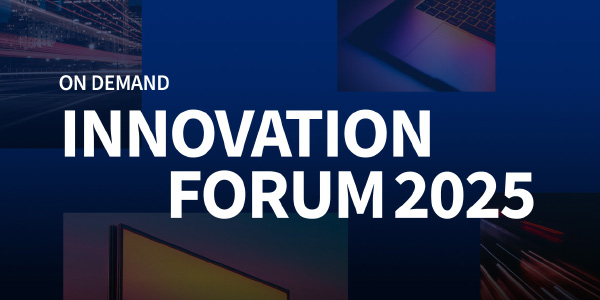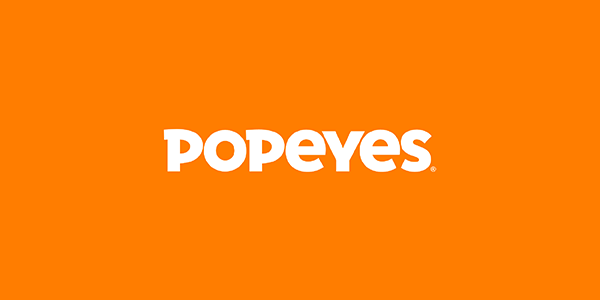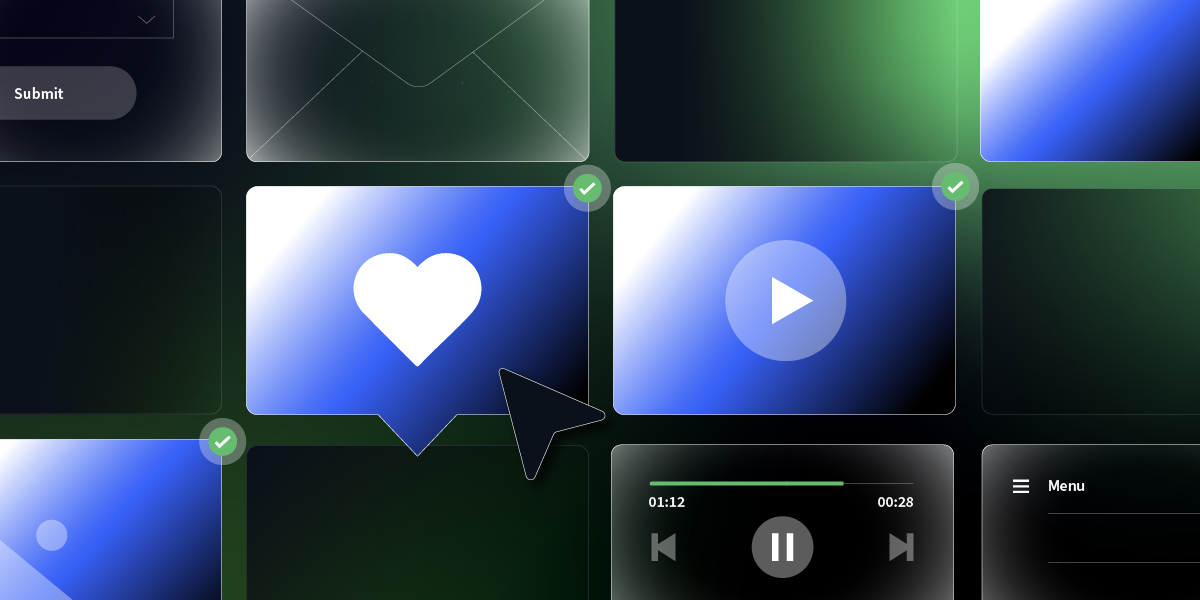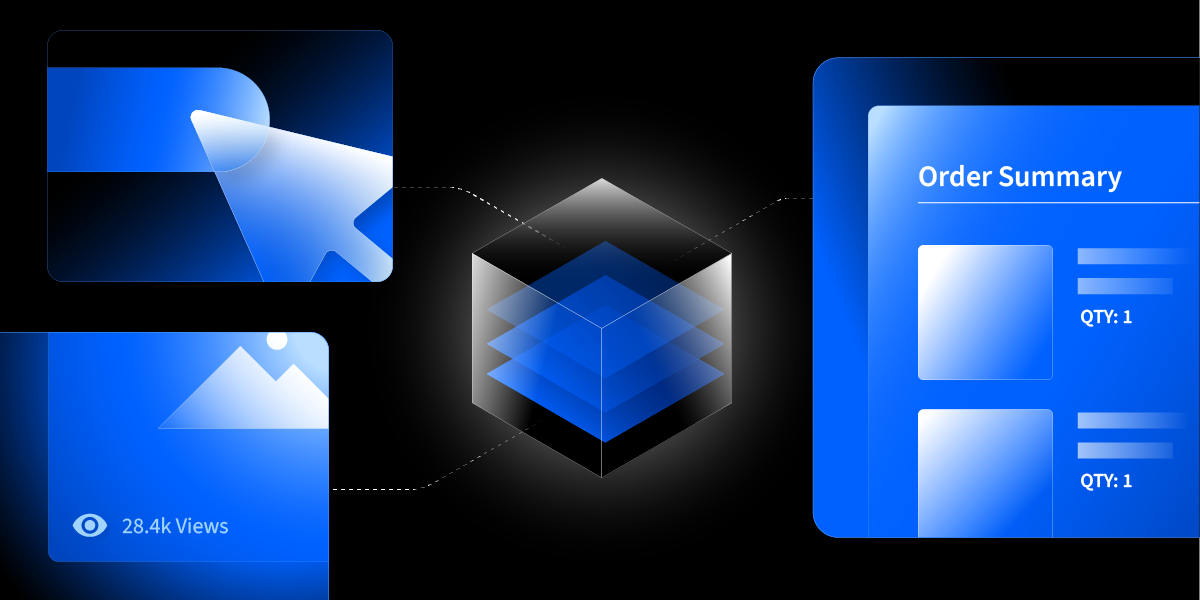How Agencies Thrive: S3
Bonus Episode 2
The Power of Personalized Targeting

About This Episode
We discuss what personalization is in the context of ad creatives, and how personalized ads can drive programmatic advertising success.
Rebecca Damiani | Senior Manager, Creative Operations, StackAdapt
Transcript
Episode Introduction (00:00:00)
Google is phasing out their third-party cookies on Chrome, we need to start thinking of alternate tactics. So way that we can do that is with contextual advertising based on, you know, the places and spaces your consumer base shows up, you can look at that type of inventory and make sure that your brand is also showing up. This is a great way to cast a wider net, and being able to target folks that might be on like the cusp of your audience pool or even outside of your audience pool.
How Agencies Thrive Introduction (00:00:26)
But then you think about the social landscape, research and data is hugely significant when we combine all of these different touchpoints with that long-term loyalty, and then diving into the clicks to leads to sales gotten to a point where it can drive better results in audience targeting and really is what’s going to set you apart. You’re tuning in to the How Agencies Thrive podcast.
Sneha (00:00:50)
Did you know that 90% of US consumers find marketing personalization very or somewhat appealing, and here’s a more shocking one you may have to be wary about: 63% of consumers will stop buying from brands that use poor personalization tactics. Thank you for tuning in, and welcome to the How Agencies Thrive podcast. In today’s episode, we’re discussing the power of targeting with personalization and some practical tips on how to execute this well. I’m Sneha Suhas from StackAdapt. And today, we’re joined by a creative expert Rebecca Damiani. Firstly, welcome to the show. Rebecca, thank you so much for joining us. excited to have you here. And I have so many questions for you. But before that, can you please introduce yourself and tell us about your professional experience so far?
Rebecca (00:01:47)
First off, thank you so much for having me, I’m really excited to be here. And my name, like you said, is Rebecca, and I’m one of the creative studio managers here at StackAdapt. So for those of you that don’t know, StackAdapt does have an internal creative team, we actually don’t work on any of StackAdapt creative, what we do support on is all of the client creative. So whether a client needs support for the full creative process. So that’s ideation, that strategy building, that’s creative development, and production. Or if a client just needs support at one of those areas in the process, we really act as an extension of our clients creative team, to make sure that you know, they’re getting to market on time, and also putting out elevated creatives that perform. So that’s really the function of the creative studio team. In terms of my background, I actually don’t have experience in programmatic or tech prior to StackAdapt. My experiences in traditional advertising and branded partnerships. So in my work experience, I’ve worked on a wide array of clients. So that’s Cadillac, Canada, that’s Loblaws companies, a fria as well as oh, gee, and there’s been many different smaller brands and nonprofit brands that I’ve been able to work closely with. So coming from a traditional advertising standpoint, and coming into the programmatic space has been really interesting, especially from a creative perspective, right? Because I’m able to kind of understand how messaging resonates with different types of audiences in the different types of spaces and places they show up. So it’s been really interesting to kind of get both sides of the coin for my experience.
Sneha (00:03:27)
That’s interesting. Sounds like a really fun job, actually. And let me dive into the first question I had for you. Could you define personalization? And when it comes to creatives, where does personalization start?
Rebecca (00:03:42)
Yeah and you know, personalization is so important in any marketing strategy. And I do want to say that personalization is not just about adding, let’s say, the consumer city to your creatives. So let’s say you’re running out of home, and you want to put Hey, Toronto and all the billboards that are running in Toronto, or let’s say you’re running in email marketing strategy, and you want to make sure the consumers name is at the top of the email. I don’t want to discount these tactics, because I do think that they’re really important. But when we talk about personalization in marketing, this means that we’re making creative decisions that are rooted in all the data that we’ve collected. So personalization, is all about data collection, leveraging those insights, and making creative choices based on them. It’s all about being able to reach the right person with the right messaging at the right time. So it’s kind of that really fine balance of being able to make sure your messaging is really resonating with those audience members. And in terms of where personalization starts. It can really start at any different stage of the funnel, as well as it can start from the audience insights you gather from previous campaigns. And it can also start from real time insights. You don’t need to always have all of the research done beforehand, you can actually learn iterate in real time. So that’s something that’s really important to consider.
Sneha (00:05:06)
Yeah, that makes a lot of sense. And you mentioned stages of the marketing funnel. So when it comes to hyper-personalized ads being used, when or at what stage of the funnel, do you think these work best? And could you also tell us about some of the best channels for this?
Rebecca (00:05:25)
Yes. So like I said, when it comes to a full funnel approach, personalization can and should happen at every single stage. A common mistake I see marketers make is that they think personalization can only happen with lower-funnel tactics. And the challenge with this thinking is that in order to have a successful lower funnel tactic, you need to have an engaged audience. And how do you have an engaged audience? Well, you have them hooked right at the awareness. So right at the top of the funnel, so kind of what I mentioned earlier, most marketers will have the research and the consumer insights, let’s say based on previous campaigns, but some of the marketers that we work with, maybe they’re a brand new brand to the market, they might not have that, you know, wealth of information. So something that you can do as an upper funnel tactic is to test test to see what works best and what resonates with your audience. So something that I always recommend as an upper funnel tactic is to produce something that’s fairly easy and quick to get out into the world. So think of the channel like native you have your messaging as well as your imagery. I know for my team, this is definitely the fastest channel to produce. So you can get out to market fairly quickly. And when you put this on, let’s say the platform, if we’re thinking about this to the programmatic lens, let’s test different combinations. So different imagery against different coffee, and we’ll see which ones perform as the winner. Now, you will have your assumptions, and you will have your insights that guide you to your messaging. But I always tell the clients that we’ve worked with, be prepared to either be validated or disproved once you’re in market, because you can have all of that research done, and you can still get it wrong. So this is such a great way to number one, get out in the market fairly quickly. And number two, get real time insights that you can bring into the rest of your campaign. So for this native example, we’re adding all these combinations, we’re seeing which one performance is the winner, if we have multiple winners, we can put more budget behind them to optimize these creatives further. And for the ones that aren’t performing well, we can just pull them right down. And there you have it, we’re able to bring these insights into the rest of the campaign into the rest of the tactics. So that’s a really great way to get the information as fast as you can, and bring personalization into all the different creative executions that you might have in a full funnel strategy. So that’s kind of one way. And you know, when we talk about other channels, you can personalize with any channel. But I would say the channels that you can maybe do the most with from a tech perspective would of course, be display. We love display. It’s truly the workhorse of programmatic. There’s a couple of different formats that work really, really well when it comes to personalization. So the first one I’m going to mention is called a discovery ad. I really like a discovery ad. Because we’re putting the autonomy into the user, we are asking the user, what do you want to see more about? And we’re letting that user kind of create their own personalized journey. So what a discovery ad does is it will ask a question, have a series of answers and based on what answer the user clicks on, they’ll then be placed in a retargeting pool, and then be retargeted with content that suits their needs. So really great for personalization. Another one under the display umbrella would be dynamic retargeting. And I think we’ve all been victims of dynamic retargeting, really great for CPG, and retail. So let’s say you’re online, you’re looking at sweaters to buy, you look at a sweater, and you abandon your cart. Let’s say later in the day, you’re trying to read a publication, and you are just seeing that sweater that you looked at before time and time again. And if you’re anything like me, this is highly successful in pushing and encouraging conversions. So that’s a really great way again, to personalize and just act as a bit of a reminder to those consumers. A couple other ones in the dynamic space would be a dynamic city. So dynamic ads are really great if you’re in events, entertainment or travel verticals. And what it does is it uses the user’s IP address and based on their location, it will pull in their city name into the creative so that’s a really great one. And lastly is dynamic weather. So I love dynamic weather. I think it’s really great for advertisers that span across vast GIOS and when I always like to say is, you know, I’m from Toronto, it’s March. I have not seen the sun it feels like in six months. So you would not target me from Toronto with like a sunscreen or any Anything that revolves around weather, warm weather, sun, anything like that, however, you would target me with things that meet my needs. So maybe an umbrella, maybe a parka, maybe a happy lamp, things like that are very contextual. And they’ll suit my needs. And suit someone may be down in Florida as needs very differently. So those are a couple of different executions for display. And then lastly, I’m going to use another channel as an example digital out of home is one of our newer ones, we absolutely love it, you can do a lot of interesting things with contextual digital out of home. So I’m going to give you an example. Let’s say there’s a conference happening in Toronto, let’s say so any folks that are flying in, we can target them at the airport, we can really use our inventory to our advantage, we can run digital out of home in rideshare programs and cabs to target those folks again, and then in the places and spaces outside of the convention. So there, like I said, the limit does not exist with what channels you can personalize with. There’s so many different ways to slice it. But the biggest thing I want to get across is that’s really use the tech to personalize as well as the creative tactics. I think those two should go hand in hand.
Sneha (00:11:12)
Rebecca, my next question to you is, how do you ensure that the prospect does not feel like too much of their data is out there? How do you personalize in a way that is not creepy for the prospect? For example, if I see an ad about something I really remember searching for, and especially if it is the exact same brand and model, it makes me a little uncomfortable. And this happens quite frequently, I’m sure for everyone else as well. People even claim getting ads for things they’ve spoken about, you know, what is the line we can draw for this audience then online?
Rebecca (00:11:50)
I think this is such a great question. And I do encourage all marketers to make sure they’re having these conversations both internally with their company, as well as with any external partners. So whether that’s your DSPS, whether that’s your advertising agencies, or any, let’s say, third party, data collection agencies, make sure you’re having these conversations. And as a brand, make sure you have a firm stance on this. I think that’s something consumers want to see a lot of. And like you said, I do think as marketers, we need to find different solutions to of course, make sure that our ads are data driven, and personalized, but also balanced that to make sure we’re not compromising personal data or user privacy. So I’m going to give you a couple of different tactics that I think all marketers should keep in mind when they’re putting the campaign together. So the first one and this is from like the brand perspective is you can do a couple things to really build trust with your audience. And I think that is really important from also a brand affinity perspective. So some things that you can do is, like I said, have a stance on data and privacy and predominantly display that stands on your website. So make it known, this is what you’re doing with the user’s data, I think that’s a really great way to start building trust and just being very transparent with your consumer base. Another one is to give your clients the freedom to customize their data and cookie setting. I know a lot of different websites have this. So that’s something that, you know, we can really encourage our marketers and brands to do. And then the last one is, let’s make sure that we are also encouraging users to give their data, I think that is a really important tactic. Another way we can do that is really encourage our consumer base to provide their own data. So again, let’s give the autonomy back to the consumers. And a couple of different ways that we can do that in the programmatic landscape would be through our tactics. So by running something like a discovery ad, we’re asking the consumer to tell us what they want to learn more about, and then placing them in retargeting pools accordingly. So there’s a couple of different ways that we can do that a brand lift study is also really great, we’re able to get first hand feedback from our consumer base. So these are tactics that should be in any marketing strategy. As well, more privacy regulations are coming into place. For instance, as I’m sure most of us know, Google is phasing out their third party cookies on Chrome. So we need to start thinking of alternate tactics to be personalized to make sure our ads are resonating. But again, also balancing the data privacy compliance that is coming into place. So whether we can do that is with contextual advertising. And I love contextual advertising so much, I think it is so great. And there’s a couple of different ways that we can do this. So based on you know, the places and spaces your consumer base shows up, you can be able to look at that type of inventory and make sure that your brand is also showing up in those same places as well. I would always say think about your adjacent audiences. So this is a great way to cast a wider Net, and being able to target folks that might be on like the cusp of your audience pool or even outside of your audience pool. So again, really great way to target folks without any of that data collection. And I think we’re going to be seeing a lot of this moving forward. So those are some of the different ways to do it. As always, I would just make sure you’re following the most up to date privacy and data compliance policies, that’s the best way to go about it. And you know, just to reiterate, let’s make sure that we’re encouraging our consumers to tell us what they want from us. And that could be feedback as well, it is so important to listen to our consumer base, and be able to be flexible and adaptable and kind of adapt to the ever changing landscape of technology.
Sneha (00:15:42)
Talking about the changing landscape of technology, what would you say are some of the differences when it comes to personalization of creatives in the programmatic landscape versus how it’s done for social media?
Rebecca (00:15:56)
Yeah, of course. So as we know, social media and programmatic are two very different places, and marketing strategies should be different for each, it’s just a different consumption pattern for our consumers. So I’d say the biggest difference is with social media, you’re really limited to the type of inventory you’re providing. So although you can have some of that audience data pulled from social, you can have your target markets, you can have your personas that you’re speaking to, that said, you’re only going to be speaking to them in predominantly two ways. So with static posts, or video posts, the great thing about programmatic is you’re able to really use the inventory to your advantage. And you’re able to kind of personalize based on the channel. And you know, something that I always like to say is, think about your own consumption habits. I know for me, I don’t really resonate with video ads. So that could be on social or online video. They for whatever reason, they just don’t work for me. But I do really like native ads, even before I knew what a native ad was, I was typically engaging with them. So if you’re only running one or two types of channels, you’re going to completely limit your audience pool. And you’re going to completely remove the folks that, you know, maybe those channels don’t resonate with them. So I would say that’s kind of the biggest difference. And when it comes to programmatic, we can be a lot granular with our targeting, it opens up a lot more opportunity. And we can also add on that contextual layer. So again, we can show up in the places and spaces our consumer bases are consistently going in. So I would say those are kind of the big differentiators between the two.
Sneha (00:17:41)
Yeah. Rebecca, those are some great insights, some thought provoking details for anyone listening to this episode right now. Thank you so much for joining us. And that brings us to the end of this episode. We have episodes releasing on alternate Wednesdays. So make sure you follow the podcast to catch the episode. Right when it drops. If you want to get in touch with us, you can write to us at academy@stackadapt.com That’s academy@stackadapt.com. Thanks for listening, and we’ll see you next time
Episode Outro (00:18:12)
Thank you so much for tuning in. This has been the How Agencies Thrive podcast. If you like what you heard, then there’s three things that you can do to support the show. Number one, subscribe. Number two, leave us a review. And number three, share our podcasts on social media or with anyone who might find value in this content. If you have questions or feedback or just want to learn how agencies and brands work with StackAdapt, you can us at StackAapt.com. Thanks for listening, and we’ll see you next time.





